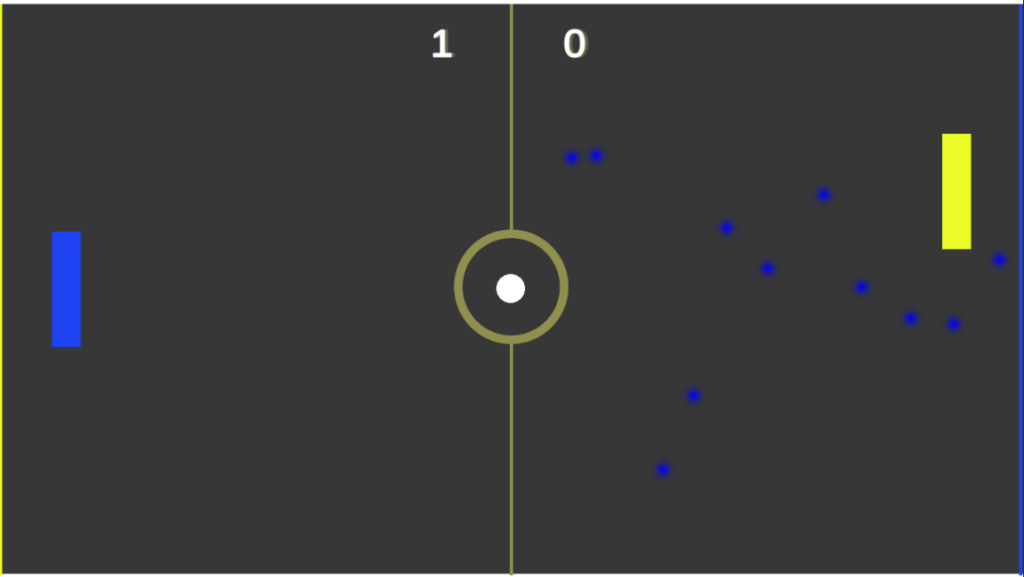Pong, the iconic arcade game that ushered in a whole new era of video games, has a legacy that is as enduring as it is influential. Devised by Allan Alcorn and released by Atari, Inc. in 1972, Pong was the first commercially successful video game and paved the way for the multi-billion dollar industry we see today.
Pong is a simple two-dimensional sports game that simulates table tennis. Each player controls a paddle by dragging it vertically across the screen’s left or right side. Players use their paddles to strike the ball back and forth, aiming to score by pushing the ball past their opponent’s paddle. The charm of Pong lies in its simplicity, accessibility, and the competitive thrill it invokes.
Fast forward to today, and we are still celebrating Pong, albeit with a fresh perspective. As an indie game developer and enthusiast, I’ve embarked on a journey to revisit this classic, this time with a modern twist. I’ve developed a series of four modern adaptations of classic games to learn Unity and C#, and Pong stands as the first in this series.
You can check the full code in the repository https://github.com/EdgarGomez/Pong
And play the game clicking here:
In this article, we’ll dive deep into the design and development process of the revamped Pong game, which comes loaded with a host of new features while preserving the essence of the original. It now features a game board reminiscent of a football field, an homage to the competitive spirit of the original Pong.
Beyond just the aesthetics, the modernized Pong game includes several additional configuration options:
- The ability to change the color of the paddles for both players
- The choice to select the game mode: Player versus Player or Player versus AI
- The option to alter the number of goals needed for victory
- The ability to adjust the game difficulty, which speeds up the ball

As we delve into the journey of recreating this classic, we will discuss the mechanics used, share code snippets, and provide explanations to help fellow enthusiasts understand the process. This article will not only serve as a behind-the-scenes tour of the development process but also as a tutorial for those keen on following in these footsteps.
Design and Inspiration
When it comes to the design of the game, it borrows heavily from the original Pong’s aesthetic, but with a few modern twists. The game still features the classic two-paddle setup with a central line, reminiscent of the original table-tennis-inspired layout.
However, to inject a fresh appeal, the central line is adorned with a vibrant color, and a circular motif in the center emulates a football field. The stark white boundaries indicate where the ball will rebound, and two opposing color lines act as goal posts. The ball is a conspicuous white, contrasting well against the dark game board.
In addition to these visual updates, the game comes equipped with several simple yet effective particle and sound effects:
- White particles whenever the ball hits a paddle or wall
- Goal particles matching the color of the scoring paddle
- Goal sound effect
- Sound effect of ball hitting the walls
- Sound effect of ball hitting the paddles
The UI is kept simple and intuitive, with a score counter on either side tracking each player’s goals. Game Over or Victory text appears at the end of a match, showing the winner in their respective color. Instructions indicating that “R” restarts the game and “Q” exits to the configuration menu are also provided.

Before launching the game, there’s an initial scene where players can customize their game settings. These preferences are saved using PlayerPrefs for a more personalized gaming experience. The design here is kept equally simple. A background image reminiscent of the in-game ball sets the tone, and a UI Panel houses various dropdowns and explanations for each option. Lastly, there are two buttons:
- A “Save and Play” button
- An “About” button which reveals game information

Please note that this is the first of four game adaptations I’ve worked on. Being the first, it’s more rudimentary compared to the subsequent ones. In the later versions, you’ll witness noticeable improvements not only in design but also in UI, mechanics, and asset organization. It’s a journey of constant learning and refinement, and I’m excited to share these progressions with you in the coming articles.
Leave a Reply